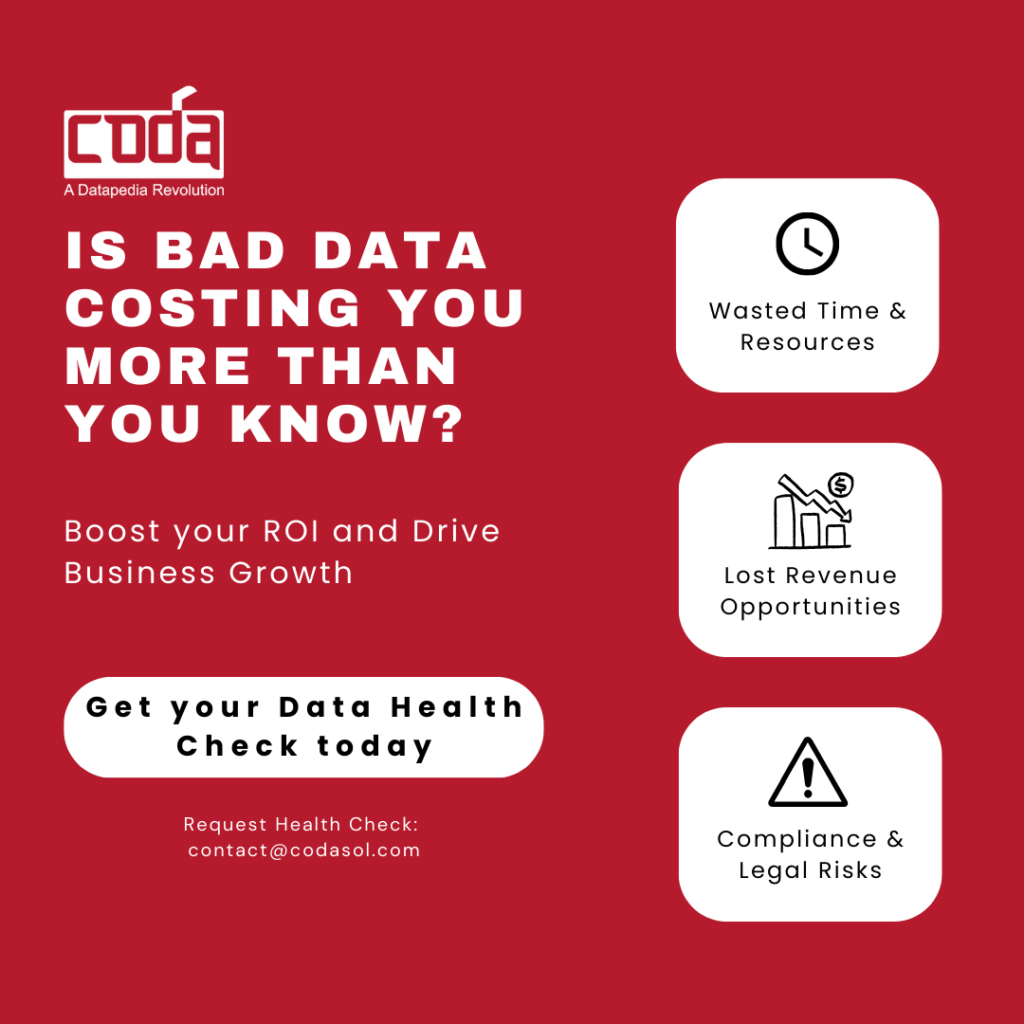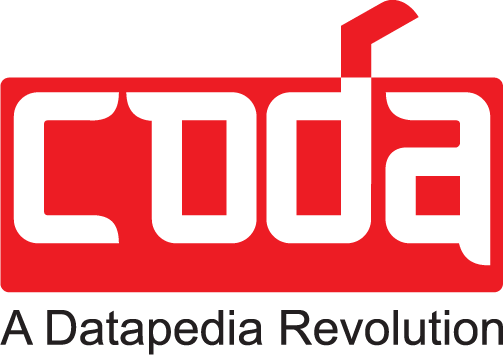SAP has significantly transformed Master Data Management (MDM), empowering businesses to centralize, manage, and govern data across critical functions. For industries like oil & gas, pharmaceuticals, and manufacturing, SAP’s MDM solutions ensure data quality, improve regulatory compliance, and enable data-driven decision-making.
Let’s explore how SAP supports MDM, the advantages it offers, the challenges it may pose, and best practices for effective implementation.
What is SAP?
SAP (Systems, Applications, and Products) is a global leader in ERP software, widely adopted for its robust capabilities in managing and centralizing enterprise data. SAP facilitates seamless data integration across departments, eliminating silos, enhancing data accessibility, and promoting accurate reporting.
SAP’s two primary solutions for MDM, SAP ECC, and SAP S/4 HANA, each play a critical role in data governance and quality.
Overview of SAP ECC and SAP S/4 HANA
SAP offers two distinct ERP platforms for MDM:
SAP ECC (ERP Central Component):
A key component of the SAP Business Suite since 2004, ECC provides modular ERP functionality with tools for Finance, Sales, Distribution, and Materials Management. While ECC enabled early strides in data centralization, it has limitations for companies aiming for full digital transformation. SAP will end support for ECC in 2027, motivating organizations to migrate to SAP S/4 HANA.
SAP S/4 HANA (High-Performance Analytics Appliance):
Launched in 2017 as an evolved version of ECC, S/4 HANA enables real-time data processing and analytics, in-memory computing, and cloud functionality. SAP S/4 HANA enhances data accuracy and governance by supporting rapid data entry, processing, and retrieval, along with AI-driven insights. With its scalability and flexibility, S/4 HANA empowers organizations to take data management to the next level.
Understanding Master Data Management (MDM)
Master Data Management (MDM) is a structured approach to managing critical organizational data, ensuring consistency, accuracy, and accessibility across departments. MDM enables data governance through techniques like data cleansing, data enrichment, and de-duplication. This holistic approach allows organizations to ensure a “single source of truth” for data, which is especially important for compliance, reporting, and operational efficiency.
Why Does Master Data Management Need SAP ERP Solutions?
The foundation of effective MDM is a centralized and consistent data structure, which SAP ERP provides. SAP ERP’s MDM capabilities are essential for businesses looking to streamline data governance and improve data quality. SAP’s Master Data Governance (MDG) module, for instance, offers a suite of tools for managing data quality, maintaining data consistency, and ensuring regulatory compliance across data domains like materials, customers, and suppliers.
For example, an oil and gas company may use SAP MDG to ensure that material master data aligns across its operations, reducing costly redundancies in inventory and improving accuracy in procurement processes. In regulated industries, such as pharmaceuticals, SAP ERP ensures data consistency across regions and compliance with industry regulations, helping companies avoid legal risks and penalties.

Contact us today to learn more about implementing SAP ECC or S/4 HANA for unmatched data quality and operational efficiency.
Benefits of SAP in Master Data Management
SAP’s ERP solutions offer numerous advantages for MDM, including:
- Enhanced Data Governance
SAP’s MDG module applies rules and policies for data management across the organization. This helps businesses enforce data standards, which is essential for maintaining transparency, quality, and compliance across departments. With clear governance in place, companies can avoid duplicate or outdated data, improving decision-making accuracy. - Improved Data Quality and Accuracy
SAP supports data validation and cleansing, ensuring that only high-quality data is entered into the system. By standardizing data inputs and automatically flagging errors, SAP reduces inaccuracies and outdated information. This process ensures reliable data across all organizational levels, from production to customer service. - Increased Operational Efficiency
SAP’s automated workflows streamline data management tasks, such as data entry, validation, and approval, reducing the need for manual processes. With faster data access and fewer delays, teams can respond to operational demands more efficiently, fostering a more agile and responsive business environment. - Cost Savings
SAP helps organizations minimize costs by identifying duplicate data, consolidating inventory, and maintaining compliance with industry regulations. Avoiding duplicate inventory items, for example, can lead to significant savings, especially in large-scale industries with high-value materials, like petrochemicals and manufacturing. - Better Decision-Making
High-quality, reliable data allows leaders to make more informed decisions. With SAP’s real-time analytics and data insights, organizations can base decisions on accurate, up-to-date information, which is crucial for competitive advantage and long-term growth.
Key Challenges of Implementing SAP in MDM
While SAP is a powerful tool for MDM, it does come with potential challenges that organizations should consider:
High Implementation and Maintenance Costs
SAP ERP solutions are associated with significant costs, including licensing, installation, and ongoing maintenance. Organizations may also need to invest in additional resources, such as training for employees and support services for IT teams.
Complex Migration Processes
Migrating to SAP S/4 HANA from ECC can be complex, particularly for large enterprises with extensive historical data. Data migration often requires meticulous planning, data cleansing, and significant adjustments to align with SAP’s frameworks.
Customization Complexity
Customizing SAP to meet specific MDM needs can be challenging. While SAP offers a vast array of configuration options, too many customizations can increase deployment time, introduce complications in future updates, and add to the overall cost of the solution.
Employee Resistance
Transitioning to a new ERP system like SAP S/4 HANA can meet resistance from employees accustomed to existing systems. Effective change management strategies, including employee training, clear communication, and continuous support, are crucial for a smooth transition.
Best Practices for Leveraging SAP in Master Data Management
To maximize the value of SAP in MDM, organizations can adopt these best practices:
- Develop a Clear Data Governance Strategy
Before implementation, establish clear data governance policies that outline data ownership, quality standards, and security protocols. SAP MDG can then enforce these policies, ensuring that data remains accurate and compliant. - Prioritize Data Cleansing Before Migration
Data quality is critical for MDM success, so cleansing data prior to migration minimizes errors. By removing duplicate or outdated data, companies can streamline the migration process and enhance the accuracy of their SAP MDM environment. - Leverage Automation Features in SAP
SAP’s automation tools are key to reducing manual data entry, minimizing errors, and speeding up workflows. Automation can save time and reduce costs, especially in processes that require high volumes of data processing, such as inventory management and financial reporting. - Regularly Monitor Data Quality and Compliance
Continuous monitoring of data quality and compliance is essential for effective MDM. Use SAP’s analytics and reporting tools to track data quality metrics and quickly identify any issues that could compromise data integrity. - Invest in Employee Training and Change Management
Employees are essential to the success of any MDM strategy. Providing comprehensive training on SAP’s MDM modules and promoting a culture that values data governance will ease the transition and improve user adoption rates.
Industry Examples: SAP MDM in Action
Example 1: Pharmaceuticals
A global pharmaceutical company leveraged SAP MDG to standardize its material master data, resulting in a 15% reduction in data-related errors and enhanced compliance with regulatory requirements. By centralizing data management, the company improved reporting accuracy and reduced time-to-market for new drugs.
Example 2: Manufacturing
A manufacturing firm implemented SAP S/4 HANA to consolidate its supplier data across regions, enabling more effective procurement processes. The result was a 20% reduction in procurement costs due to more accurate supplier information, streamlined inventory management, and fewer instances of duplicate orders.

Future of MDM with SAP
The future of MDM with SAP lies in emerging technologies and AI-driven data management capabilities. SAP’s ongoing developments in AI, machine learning, and cloud computing suggest a future where data quality and governance processes become even more automated and predictive. For example, SAP’s recent advances in machine learning could enable predictive data cleansing, where AI identifies and removes outdated data before it impacts decision-making.
As organizations evolve, the demand for real-time, reliable data will only increase. With SAP continuously advancing its ERP solutions, businesses have the opportunity to achieve more agile, efficient, and data-driven operations. Implementing these capabilities in MDM positions organizations to remain competitive in a data-centric landscape.
Closing Thoughts
SAP’s MDM solutions provide a robust foundation for businesses looking to improve data governance, quality, and operational efficiency. While SAP ECC and SAP S/4 HANA offer powerful tools, careful planning, and adherence to best practices are essential for navigating the potential challenges. By keeping up-to-date with SAP’s advancements and incorporating best practices in data management, organizations can gain a substantial advantage in today’s competitive environment.

Book a consultation with our experts to explore how SAP’s powerful MDM tools can enhance data governance, streamline processes, and drive data-driven decision-making in your organization.


